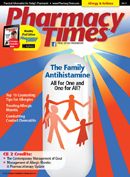Publication
Article
Pharmacy Times
Case Studies
Case One: Hello Old Friend
MM, a 67-year-old man with a history of atrial fibrillation and diabetic nephropathy (creatinine clearance [CrCl] of 40 mL/ min), comes to the pharmacy with a prescription for warfarin 5 mg once daily. He explains to the pharmacist that a few months ago his cardiologist switched him from warfarin to dabigatran 150 mg twice daily; however, since the switch he has been “suffering from intolerable dyspepsia.” MM further tells the pharmacist that his cardiologist has decided to switch him back to warfarin, but wants him to take both drugs for 2 days before stopping the dabigatran altogether. MM is unsure about taking both anticoagulants at the same time.
How should the pharmacist counsel MM?
Case Two: MRSA Bacteremia After Vancomycin Failure
MB is a 55-year-old man who was admitted for methicillin-resistant Staphylococcus aureus (MRSA) bacteremia 7 days ago. He was initially treated with vancomycin; however, his fever has persisted, his blood cultures continue to come back positive for MRSA, and he has now developed nausea and vomiting. It is decided that his initial treatment with vancomycin has failed. The physician recalls that new guidelines on the treatment of MRSA infections were recently published, but he has not had the opportunity to review them. He calls the infectious disease pharmacist and asks for a treatment recommendation based upon these new guidelines.
How should the pharmacist respond?
ANSWERS
Case 1:Dabigatran is a new direct thrombin inhibitor that reduces the risk of stroke in patients with atrial fibrillation. In the Randomized Evaluation of Long-Term Anticoagulation Therapy trial, dyspepsia was significantly more common in those receiving dabigatran compared with warfarin (11.3% vs <.001). P 5.8%, Because overall exposure to dabigatran is increased with worsening renal function, a patient’s renal function must be considered in those switching from dabigatran to warfarin. In patients such - as MM with CrCls between 31 and 50 mL/min, warfarin should be started 2 days before discontinu ing dabigatran. In patients with even poorer renal function (CrCl of 15-30 mL/min), only a 1 day overlap is needed before discontinuing dabigatran. For a CrCl >50mL/min, warfarin should be started 3 days before discontinuing dabigatran. The pharmacist should explain to MM that based upon his kidney’s ability to get rid of dabiga tran from his body (which is impaired) and, just as importantly, the time it takes warfarin to start working, it is important that he follows his cardiologist’s instruction exactly. This brief overlap of the 2 medications will help MM maintain appropriate levels of anticoagulation (not supra- or subtherapeutic) during the transition and minimize his risk of stroke.
Case 2: MRSA is a significant cause of both health care— and community-associated infections. Clinical fail ures, in which the infection persists due to resistant bacteria, occur in a substantial proportion of MRSA infections treated with the gold standard antibiotic vancomycin. Newly released evidence-based guidelines for the management of MRSA infections are available - from the Infectious Diseases Society of America. These guidelines provide treatment recommendations for patients with MRSA infections failing initial vancomycin therapy. The guidelines suggest that modification of antibiotic therapy should be considered if the patient is persistently bactere mic after 1 week of vancomycin therapy (although the threshold to change therapy may be earlier if the patient’s clinical condition is worsening). Additionally, they suggest that rather than adding additional agents to vancomycin, a complete change in antibiotic therapy should occur. \ When the MRSA isolate is susceptible, the guidelines recommend high-dose daptomycin (10mg/ kg/day) as the preferred second-line agent, because it has the most rapid bacteriocidal activity. Although there are limited or no clinical data, some experts suggest the use of daptomycin in combination with another agent, such as gentamicin 1 mg/kg intravenously (IV) every 8 hours, rifampin 600 mg orally/IV daily, linezolid 600 mg orally/IV twice daily, TMP-SMX 5 mg/kg IV twice daily, or any antistaphlococcal beta-lactam, such as dicloxacillin or cephalexin, for 14 days.
function showAnswer() {document.getElementById("answer").style.display = 'block';document.getElementById("link").style.display = 'none';}
Dr. Coleman is an associate professor of pharmacy practice and director of the pharmacoeconomics and outcomes studies group at the University of Connecticut School of Pharmacy. Ms. Peters is a PharmD candidate at the University of Connecticut School of Pharmacy.







